Benin Voodoo Festival in the eyes of a foreign tourist
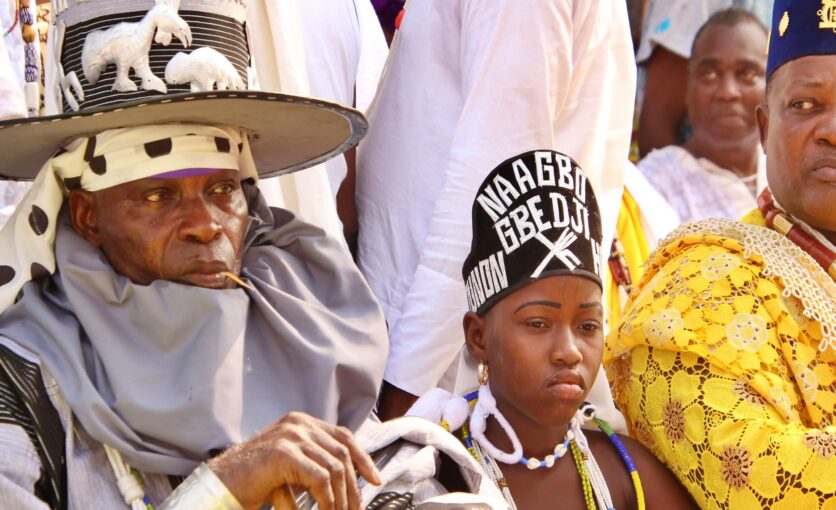
By Deborah Strauss
Images by Deborah Strauss for The African
Edited by Soumanou Salifou
Deborah Strauss, an Israeli citizen, visited Benin to experience the small West African country’s largest cultural event, the annual voodoo festival. In the process, she had a firsthand bite at Benin’s vibrant culture that she is delighted to share with the family of The African.
At the beginning of January, we went on a trip with many concerns because of the situation in Israel. The international airlines stopped flying; the confusion grew without knowing if we would be able to travel. Ethiopian Airlines later restarted its flights, and it was at that moment that we decided to continue with our trip.
The day arrived. Hearts and concerns divided into two parts: those we left at home on the one hand, and the expectations of our adventure, on the other hand.
“Flight ET 405 destination Addis Ababa with connection ET 917 to Cotonou boarding!” I felt my heart beating strongly. We began the adventure.
I have been preparing for this trip for months, even though I have already traveled to the African continent several times. My personal curiosity is very big and when I studied the place and they told me that everything is very simple, my curiosity increased, and I wondered how much simpler it can be than the places I’ve already seen in Africa.
Well, if you have the patience to read, you will eventually find my experience on the matter.
Voodoo, a spirit or divine being
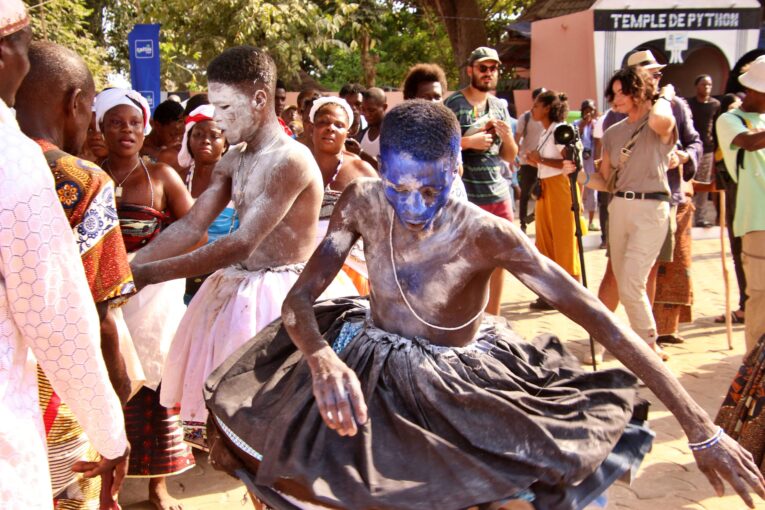
Benin is a small country in West Africa. On its western border lies Togo, on the east Nigeria, and Niger and Burkina Faso to the north. A small country in African terms but five times larger than Israel.
The plane landed at the small airport in the country’s largest city, Cotonou. It seemed to us that we had landed straight into a small colorful carnival, given the spectacular iridescence of the people’s clothes. We saw people with wooden dolls without understanding what the spread was. After we met the charming local guide, he explained: “In Benin, people who have lost a relative sculpt a wooden doll in his likeness and continue to care for the doll throughout their lives.” Deceased family members are called “the living dead.”
The journey started.
DAY 1: COTONOU
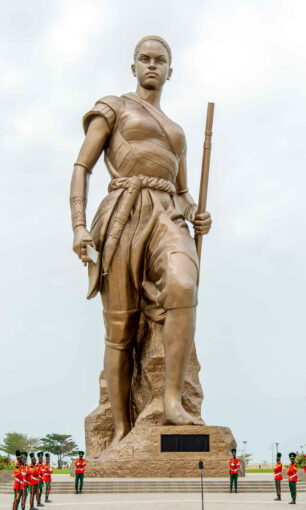
The Amazon Statue in Cotonou is a strong symbol that represents power and encouragement for women. As we arrived, we saw a group of very colorful people dancing. What a great moment in our first hours!
One of our first visits was Dantokpa market in Cotonou. It has a designated quarter for each type of product. Among others, there is an interesting fetish section with all kinds of curious merchandise, a spice corner, and an area with colorful textiles. Dantopka market is in Cotonou, Benin’s biggest city, but Porto-Novo is the official capital. Cotonou is not a city with a rich history; it mainly serves as a commercial business capital due to its deep-water port that was opened in 1908.
DAY 2: COTONOU > ALADA > OUIDAH 2 HRS, ± 90 KM
Going to Alada without thinking much, we entered a public school, where we were greeted by the principal. We played with the children and the principal explained to us about the school and the needs. A smaller voodoo festival is organized every year in Allada.
The town of Allada has been part of the powerful Danxomê kingdom since the olden days and has a strong voodoo presence. We got the chance to visit a voodoo temple and see the influential king of Allada, King Kpodégbé Toyi Djigla. The celebrations in Allada are of a much smaller scale than at the voodoo festival in Ouidah (our next stop), and therefore less official and crowded. The ceremonies are annual rituals organized to end the previous year and begin the new year.
Ouidah is also called the seat of the voodoo since the voodoo king is based here. This is also an important historical town because enslaved people were transported to the new world through here during the slave trade era. In Ouidah, the “Route des Esclaves,” (the Slave Route) and the Point of No Return Memorial are among the historical highlights remembering the thought-provoking history of the Trans-Atlantic slave trade. The 3.5 km sandy road formed the final stage of the route before the slaves were shipped to the Americas. It leads from the historical slave auction square to the Point of No Return Memorial on Ouidah’s beach.
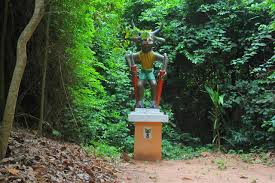 Here, we also visited the Sacred Forest of Kpassè and the Python Temple. At the Sacred Forest of Kpassè, we hear great stories about the sacred trees. The forest houses many sculptures that symbolize voodoo, animist deities and beliefs. The town has a rich traditional and colonial history. It is also seen as Benin’s spiritual capital, offering a unique insight into the world of voodoo with its magical sites, temples, and the annual voodoo festival.
Here, we also visited the Sacred Forest of Kpassè and the Python Temple. At the Sacred Forest of Kpassè, we hear great stories about the sacred trees. The forest houses many sculptures that symbolize voodoo, animist deities and beliefs. The town has a rich traditional and colonial history. It is also seen as Benin’s spiritual capital, offering a unique insight into the world of voodoo with its magical sites, temples, and the annual voodoo festival.
DAY 3: THE VOODOO FESTIVAL IN OUIDAH
The days of the journey have been exciting and full of experiences under a 95-degree sun with 90% humidity. We went to a procession in the narrow central street of the city. As every year, the city of Ouidah was chosen to host the traditional festival in Benin, with the heart of the festival grounds right on the beach.
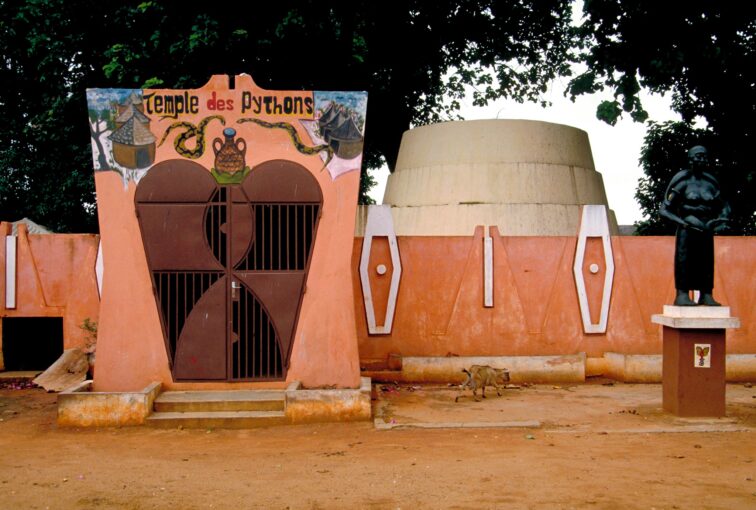
The festival procession left the house of the king of the city. People wore their most festive clothes, the kind that are worn only once a year. Voodoo kings, their wives and children shone in clothes glittering with gold and silver. Royal scepters of various shapes were cradled in their arms and huge ornate fabric “umbrellas” were carried by the entourage and shaded them. The procession passed through the Python Temple there to make a wish. The Python Temple is home to harmless python snakes, which are regarded as sacred and protected by the indigenous people.
The voodoo religion is deeply rooted in the country’s culture and traditions. It is not a belief system, but an entire way of life in which animals play an important part. Once a week, the python snakes come out of the voodoo temple, crawl freely in the streets and return to spend the night in the temple. The residents caress them, make wishes and believe that the python snake is an ancient ancestral god who protected the people in times of war and the farmers’ fields.
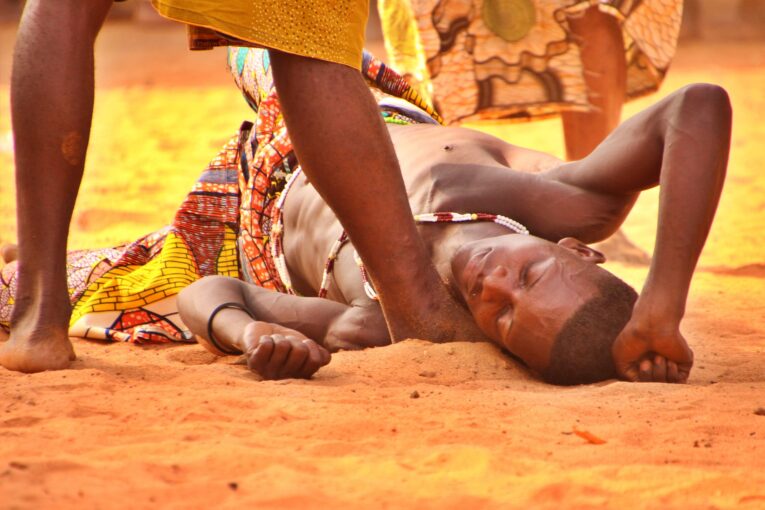
Between houses, alleys and temple courtyards, and the dust that flew to the ground, we met the overwhelming celebrations. Drums called the inhabitants and voodoo spirits to gather for the trance ceremonies. In the ceremonies the contact with the voodoo spirits is achieved through dance, music and singing. The connection is made through “detachment.” The spirit (the loa) enters a human body and thus allows the people present to talk to it and the spirit can answer the questions and perform healing.
We are drawn deep into the intricacies of the ceremonies and experience them with the residents using all our senses, great difficulty to photograph…but we managed to combine everything. The moment the divine being penetrated them, they were marked with white or yellow powder. They are no longer the same people who danced in the square until that moment. They were stripped of their clothes and instead wrapped in straw “tutu” skirts. Towards the end of the ceremony, the assistants ran to them, washed the dust off them and purified their spirits using branches and splashing water. This is how they were helped to finish the spiritual journey and return to themselves.
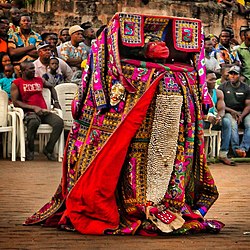
Two particularly impressive and popular ceremonies took place during the week of the festival; the ceremonies began near sunset, a very dramatic atmosphere…the colors of nature will play a large part in the drama.
A group of men started beating drums. Thus, they began to summon the spirits of the “living dead.” Many characters began to appear one after the other in magnificent, colorful and large costumes. No head or face could be seen in any of them. Among the community no one knows who the people who embody the spirits of the ancestors are. This matter is top secret. If a woman thinks it is her husband, she must not under any circumstances find out and talk about it out loud. Only men will play them. Each of the costumed characters gave his unique “show.” Some of them used to be people with a pleasant temperament in their lives and some were aggressive.
I never participated in a mystical or similar festival before arriving here, so I didn’t know what awaited me, what I could feel…Today, looking at the photos taken by me and remembering the moments, I can say that I experienced a certain pressure, maybe a little lost in time, hungry to understand what is happening around me.
We saw the priests, dignitaries and followers, often in a trance, facing deities such as Ogou, the god of iron, Sakpata, the god of earth, Khèvioso, the god of lightning. We got carried away instantly by the numerous dance performances, traditional costumes, loud music, and the odd animal sacrifice being made before our eyes. The small performances and side events in the alleyways of Ouidah gave us a unique opportunity to catch a glimpse of what voodoo is truly about.
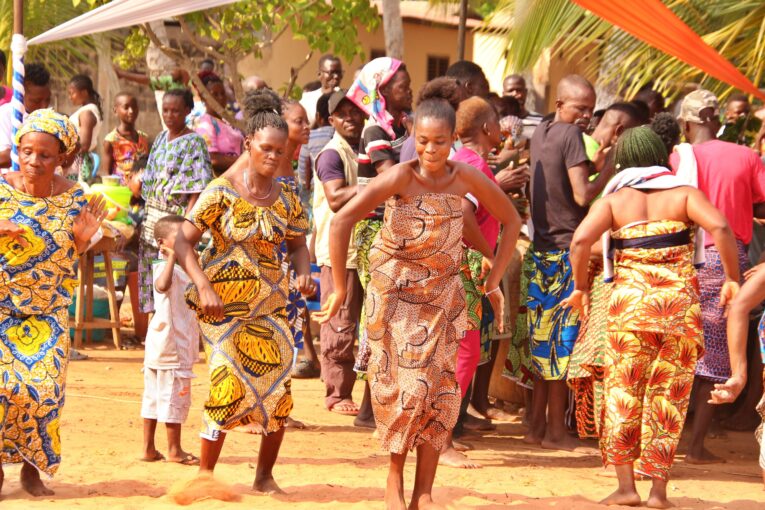
DAY 4: OUIDAH > GANVIE 1.5 HRS, ± 50 KM
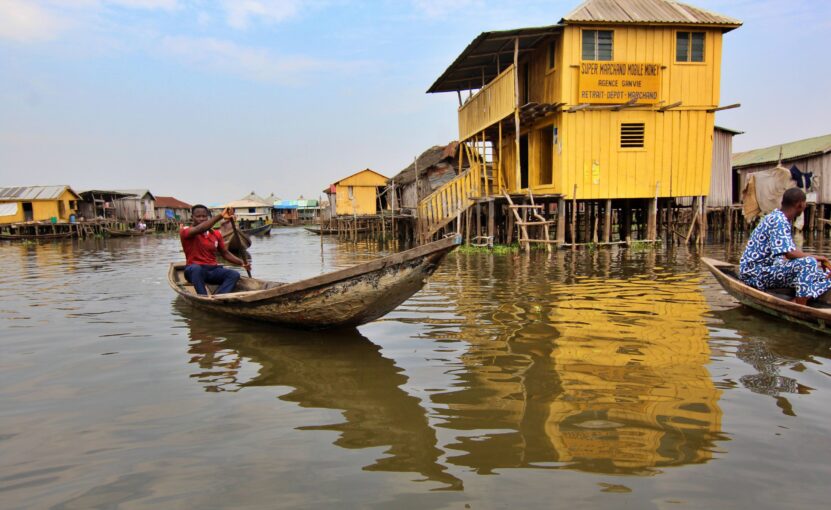
We continued to the village of Ganvié. It is incredible to experience life in an entire city built on stilts in the middle of Lac Nokoue. A motorized canoe took us to Ganvié, an amazing town built on stilts in the middle of Lac Noukoué. Roughly 40.000 people of the Tofinu tribe live in Ganvié, and it is one of the last remaining stilt settlements, dating back some 400 years. Fishing is the main activity of the Tofinu people and it was fascinating to experience daily life on the lake. By canoe, we explore the different suburbs of the village and the daily floating market.
DAY 5: GANVIE> POSSOTOME 2.5 HRS ± 97.1 KM
We left Ganvié market to continue to Possotomé, a tranquil voodoo village on the banks of the tranquil Ahémè lake, with its laidback atmosphere, waterfront activities, and a picturesque view.
Possotomè is the heart of the people’s culture. This is where we got a real impression of the role of voodoo in day-to-day life as you pass by numerous shrines around the village compound houses. We pass by the thermal water source and enjoyed the beautiful views over Lac Ahémè.
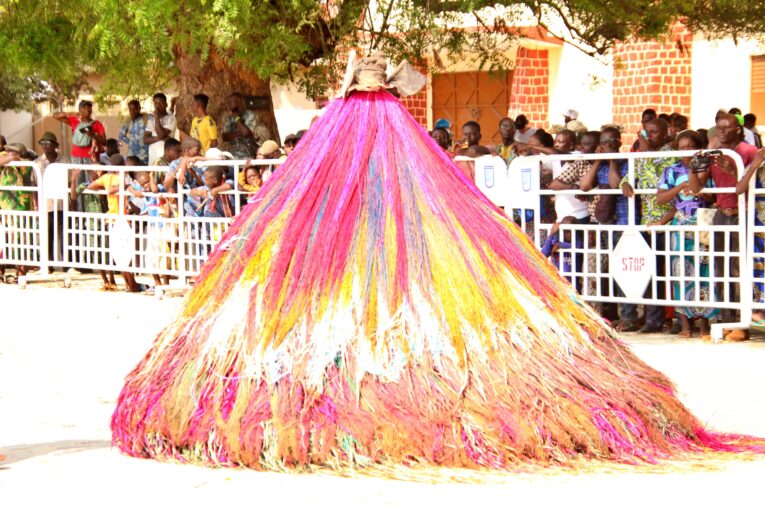
Zangbetos are the traditional voodoo guardians of the night in the voodoo religion of Benin and Togo. They are also referred to as the nightwatchmen and act as an unofficial police force that protects the community against bad spirits and malicious people. The Zangbeto wanders around the streets to detect thieves and witches, and to provide law and order. Zangbetos are highly respected by the community, and it is truly fascinating to see them perform, and to surrender to the magic of their performance will be absolutely rewarding.
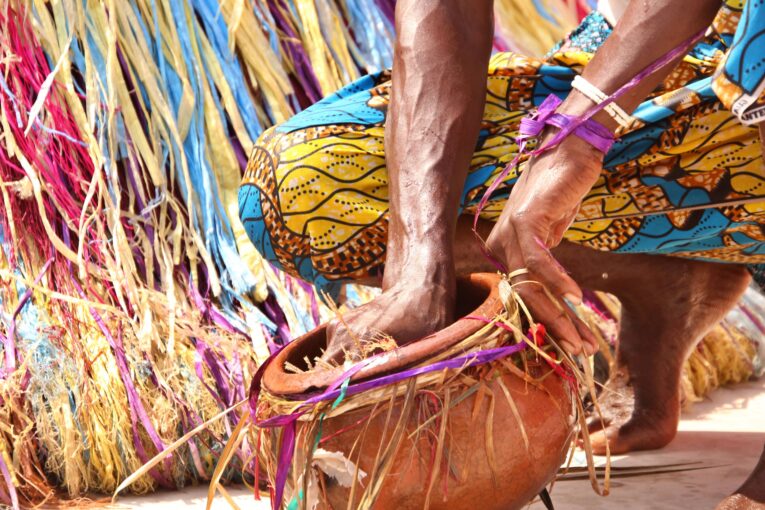
In all, our exciting two-week visit to Benin took us to several villages and cities: Kétou; Adjara; Abomey, formerly the capital of the Danxomê kingdom; Dassa-Zoumé, also known as the City of 41 Hills located in the heart of Benin known for its rolling hills. The palms and banana trees slowly making way for acacias and baobabs from the south. The tempo is slower here, and the town has a laid-back atmosphere. The granite rocks that rise from the flat plains shelter many voodoo shrines and other holy sites. While here, we explored “La Grotte Notre Dame,” a significant site that holds great religious and cultural importance. People visit this cave to pay their respects and seek blessings from Notre Dame, the Virgin Mary.
That is not to mention Porto-Novo, the capital, a tranquil city with Afro-Brazilian heritage and Yoruba culture. When the Portuguese established a slave-trading post in the 16th century, they named the city after Porto in their home country. Porto Novo is much smaller and less fast-paced than nearby Cotonou. The history and culture that is somehow lacking in Benin’s largest city, Cotonou, can be found in Porto Novo. Together with Ouidah, Porto Novo was one of the main ports of the trans-Atlantic slave trade, and many former slaves returned to their city after they were given their freedom. The Afro-Brazilian heritage is visible in the beautiful and colorful colonial buildings, like the Brazilian-style church, which is now used as a mosque.
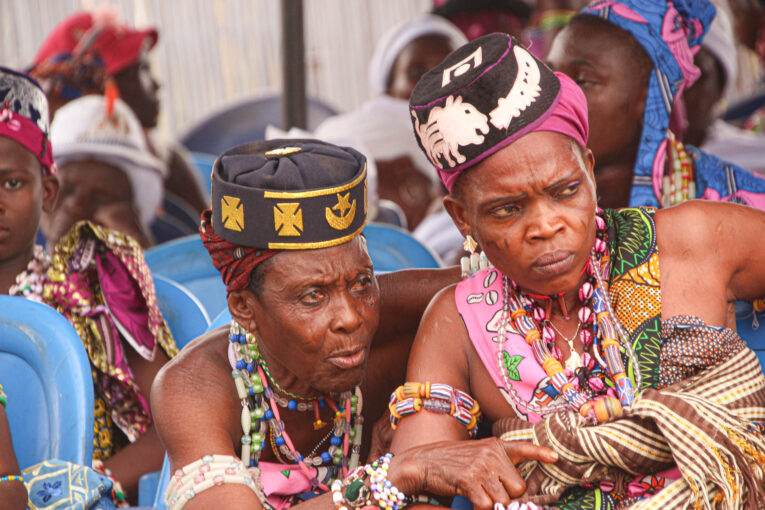
In addition to the events relating to the annual voodoo festival, we were exposed to various enriching aspects of the country’s culture. When we saw this woman on our arrival at the airport in Cotonou, my eyes went straight to her arms and her hands. These tattoos stand testament to rites of passage, societal roles, and individual achievements.
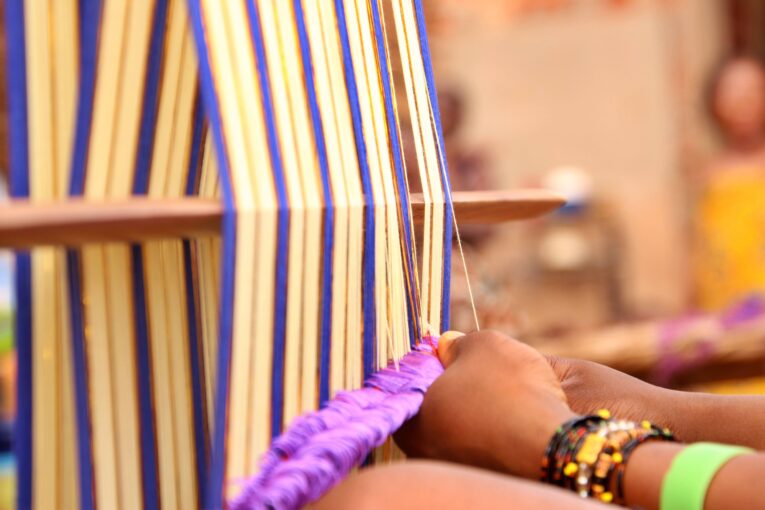
Before or after Allada town, on the way we wanted to eat pineapples, but luckily, we came across a small wooden house. Outside there was no one, only this lovely young woman knitting quietly with her machine. I loved the natural movements of her hands and her patience.
One of the things that caught my attention was the number of different hairstyles and colors in the hair of women of all ages.
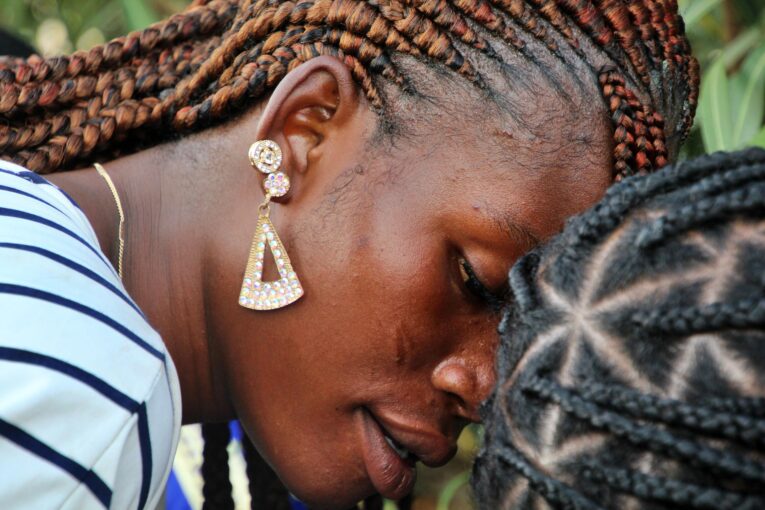
Reflection on the trip
The journey to Benin was challenging in every way, not only during the ceremonies. When it came to shower, a pipe of only cold water was waiting for us in the shower at the end of the day, in one place… Can you imagine? It was really funny.
What can I say about food? The best place to lose weight without dieting…without offending anyone. But, despite the “small” difficulties of the place, the heat and the dust that sticks to the body, the trip to Benin was a fascinating and unusual anthropological journey. Even though I arrived prepared, I can honestly tell you that I needed a few more classes to be truly prepared for what they told me was simple.
About the festival, I cannot find and have not found the right words. It is an excellent experience and, honestly, it is not for everyone.
I want to take this opportunity to thank JOLINAIKO ECO TOURS AFRICA for their patience, kindness, cordiality, and the excellent services provided by the driver and the guides.
___________
About Deborah Strauss
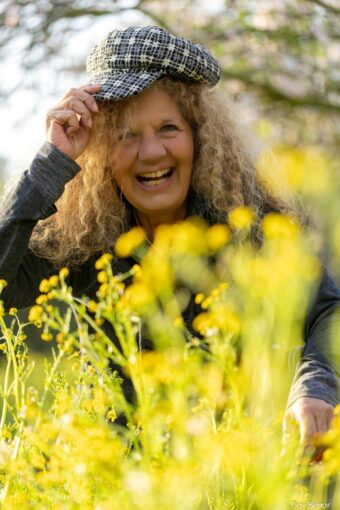
I was born in Uruguay and settled in Israel 43 years ago. At the late age of 40, I received the gift of photography. Photography has been my main hobby for more than 19 years. I enjoy traveling with my camera, exploring on the way the stories behind nature, people, and different cultures. Photography is a tool for me to glimpse carefully into these fascinating worlds. I graduated from phototherapy and photovoice as well. Traveling around the world forced me to learn phototherapy and Photovoice.
I focus on street photography, documentary photography, and cultural photography. For me, photography is a multi-layered journey between the human psyche and interpersonal relationships, and the study of historical and geographical cultures. I am curious about the story behind the subject and its cultural context and create a connection and closeness with it.

